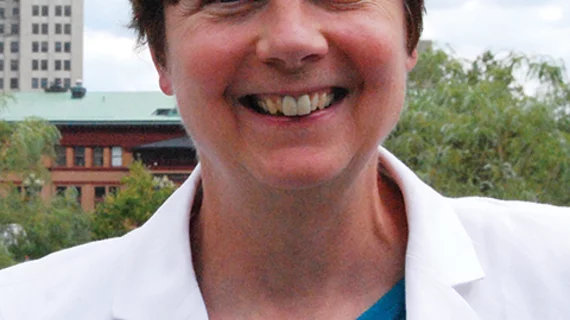Riata, TAVR & legacies
Are Riata concerns a thing of the past and transcatheter aortic valve replacement (TAVR) for almost anyone with severe aortic stenosis the way of the future? Presentations at recent cardiology conferences addressed those questions.
The Heart Rhythm Society held its 36th annual scientific sessions May 13-16 in Boston. The event included the Canadian Registry of Cardiac Implantable Electronic Device Outcomes: Phase 1 Riata lead on Advisory (CREDO) study as a late-breaking clinical trial. St. Jude Medical recalled its Riata (8Fr) and Riata ST (7Fr) defibrillation leads in 2011 because of the potential for cable externalization and insulation abrasion.
Canadian researchers have been following outcomes in patients implanted with the leads. In this study, they reported that 5.9 percent of patients with the Riata lead experienced an electrical failure at a mean 7.5 years follow-up. The cable externalization rate was 7.4 percent for the 8-French lead and 4.9 percent for the 7-French lead, with most events occurring after six years for both models.
“Given this data, isolated lead revision or extraction due to advisory is not warranted,” said presenter Ratika Parkash, MD, of Dalhousie University in Halifax, Canada. This is one of several studies he and his colleagues have conducted to help guide management of patients implanted with the leads.
Paris served as the host city for EuroPCR, which ran May 19-22. Lars Sondergaard, MD, DMSc, spoke with Cardiovascular Business about results from NOTION (Nordic Aortic Valve Intervention Trial). NOTION is an investigator-initiated all-comers clinical trial that randomized 280 patients to be implanted with the CoreValve TAVR device (Medtronic) or undergo surgical aortic valve replacement (SAVR).
The trial began enrolling patients in 2009, in TAVR’s earlier days. The design allowed for lower-risk patients, who made up 81.8 percent of the final patient cohort. Most studies then focused on the inoperable and high-risk patient populations. At that time, some centers declined to participate in NOTION, voicing concerns about testing a still unknown technology in patients who had other options, Sondergaard said.
At one year, in an as-treated analysis the primary outcome (the composite of all-cause death, stroke or MI after the procedure) occurred in 11.3 percent of the TAVR patients and 15.7 percent of the SAVR patients. At two years, the rates were 15.8 percent and 18.8 percent. The rate of death from any cause was 8 percent and 9.8 percent, respectively.
NOTION’s data on complications mirrors some results with higher-risk patients who received self-expanding devices. NOTION’s TAVR group had higher rates of needing a permanent pacemaker and moderate to severe aortic valve regurgitation at one and two years compared with SAVR.
Later generation devices and the use of CT rather than 2D transesophageal echocardiography for sizing have helped to reduce those complication rates. NOTION may help guide design in future trials in low-risk patients, Sondergaard said. Given recent advances, the results on complications are expected to be strikingly different.
CREDO and other lead-related studies have provided understanding, knowledge and some confidence in how to move forward after the Riata recall. Concerns about implantable leads probably won’t disappear until leads become obsolete, though. That might happen as leadless technologies gain traction.
NOTION, on the other hand, raised the notion that TAVR could be suitable for many patients with severe aortic stenosis early in the technology’s life. It won’t likely be the defining trial for this patient population, but it may well be the inspiration.
Candace Stuart
Editor, Cardiovascular Business
